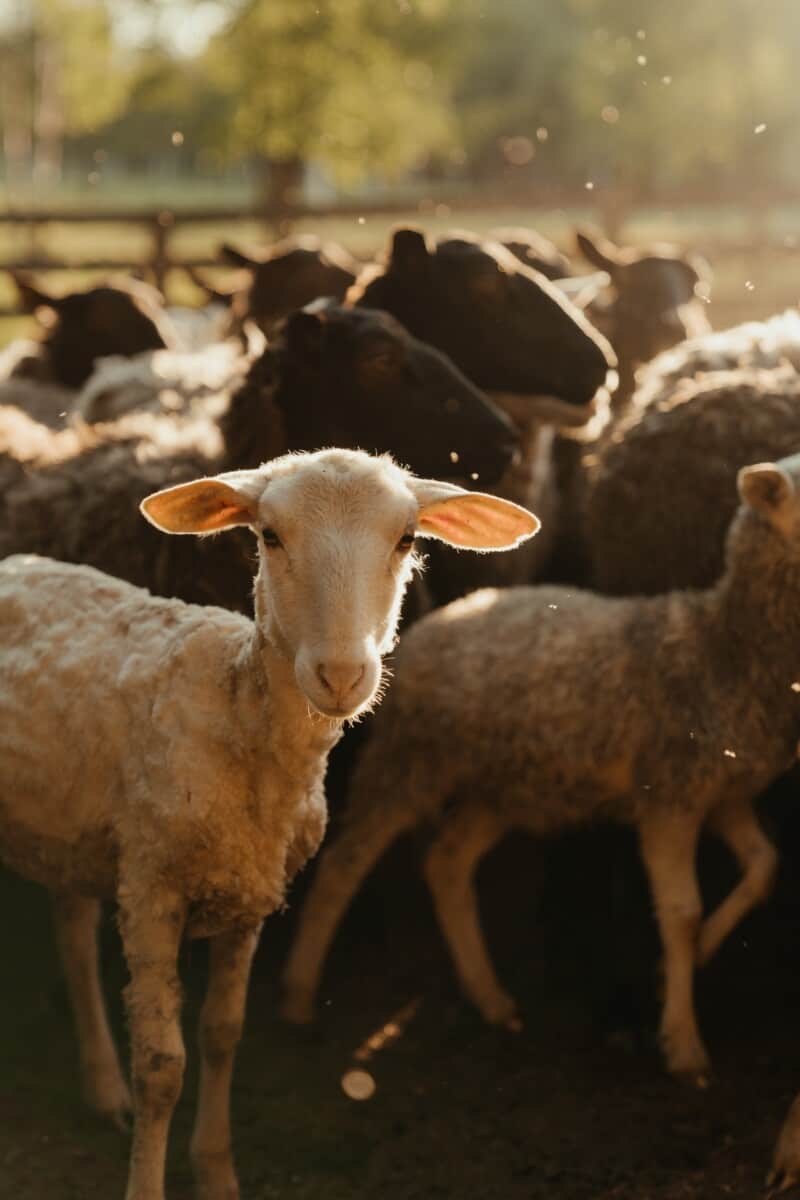Depending on the climate and the state of the sheep themselves, the time for shearing the animals can vary. When we shear sheep, we tend to do it in June/July. The Scottish (brief) summer is starting to warm up and it will be in time for the wool markets. We’ve been lucky in that we do our shearing but sometimes, that is just not possible. So what does it cost to have your sheep sheared?
About £2 per sheep is what I’ve seen around.
Shearing begins in the early summer, with the arrival of warmer weather, when the wool is fully fluffed on the sheep. During this period, the coat of coarse-haired and semi-coarse-haired individuals is teased (the connection between the skin and the coat weakens). If you do not cut the hair in time, the hair will be lost due to shedding. This is why it’s important to make sure that you start when the weather starts warming up.
In breeds of fine-wool and semi-fine-wool (check out my articles on different breeds of sheep here), seasonal molting is not usually seen, but because of this, it is impossible to choose an arbitrary time for a haircut. In the spring of these sheep, wool is dry and tough due to the lack of grease in the fleece, so it is difficult to cut it and it is not of high quality. You can start to sheer your sheep when a sufficient amount of grease has accumulated in the fleece.
Fine-wool and semi-fine-wool sheep with uniform wool are sheared in the spring once a year; lambs that appeared in the spring are sheared after a year. In the case of winter lambing (around January-February), young semi-fine fleece breeds can be sheared in the same year, around August. Their wool is called bright and can be highly sought after in some markets.
Coarse and semi-coarse breeds with irregular coats are cut twice a year: in autumn/fall and spring. The hair of the young is sheared in the year of birth, as a rule, in the autumn/fall period.
Coarse Wool Sheep
The weight of the animal during a haircut is also important. Fairly well-fed animals have dense skin, an even surface of the body and the necessary amount of grease, which makes the wool pleasant to the touch, elastic and pliable for shearing. If you need to know more about sheep nutrition, make sure to check out my article on the topic here.
What can further complicate the process of shearing a sheep, the seeds of feather grass, burdock and other weeds clogged with fleece can be.
The Sheep Shearing Process – How To Do It
Sheep should be sheared before feeding and drinking. When clipping, the coat must be dry. For shearing, spring scissors or a special sheep shearing machine, the so-called shearing machine, are used. Before the very beginning of a haircut, three legs folded in a cross are tied to the animal. One leg remains free for handling. It is best to use a boardwalk as a cutting area.
First of all, they cut off the hair from the head, then move to the neck, chest, groin of the unbound leg and belly. Then the side, back and tail are treated. After that, the sheep is turned over on the other side, the legs are tied on a new one and the wool is sheared from this side on the side, shoulder blade, belly and groin. It should be cut as close to the skin layer as possible, but without injuring the animal.
Very carefully it is necessary to process the belly, gently bending around the nipples in bright and queens and the scrotum in sheep. It is impossible to go through the same section twice with a typewriter or scissors, otherwise a cut appears, reducing the quality of the rune.
The wool cut from the belly, legs and rump is folded from the fleece separately. It is also necessary to separate the dirty wool so as not to degrade the quality of the rest. The resulting wool is handed over to special procurement organizations; its price will depend on the quality and appearance. Check out my article on how to value your wool here!
The washed wool should be stored. To wash it, you need to prepare a soap and soda mixture: 100 g of soap and 50 g of soda are dissolved in 6 liters of hot water, then 2 liters of this solution are combined with 8 liters of hot water and a solution is obtained for washing sheepskin wool. The wool is washed with the resulting mixture (temperature 45-50 degrees Celsius) three times and then thoroughly rinsed in plain water, after which the wool is wrung out and dried.
When storing wool, you need to know that it is able to quickly absorb moisture, which leads to its maturation and loss of chain physical properties: elasticity, strength, color, etc. It follows from this that sheepskin wool can only be stored in a dry, ventilated room.
The Real Cost Of Shearing Sheep
Shearing requires both skill and a lot of hard, physical work in hot summer conditions. Some farmers shear their own sheep but many, especially those with large flocks (anything over a few hundred sheep) hire specialist shearing gangs to do the work for them.
Shearing gangs typically have three to eight members, and travel the country going from farm to farm, shearing every day during the season. It is a hard life but pay can be good, about £2 a sheep and a good shearer can shear 200 sheep per day.
The Best Way To Shear Sheep
Before starting a shearing, the specialist should grab the sheep with one hand in the neck area and with the other in the area behind the forepaws. Having pulled the sheep up a little so that the hind legs remain on the floor, and the front legs are in the air, the master should move with his back, continuing to pull the animal to the working space.
It will be most convenient to support the sheep at an angle of approximately 45 ° to the floor. This will avoid additional efforts and “fight” with the sheep. If you lead the sheep vertically, that is, at an angle of 90 ° in relation to the floor, then its position will be unstable, which is why the sheep will constantly try to escape, losing balance.
To keep it in this position requires considerable physical effort from the shearer, and, accordingly, more time is spent than with competent handling of the animal. When tilted at 45 ° to the floor, the sheep does not get nervous, does not try to escape, but calmly rests on the arms that support it with the front of its body and neck, while moving on its hind legs.
To make it comfortable to cut in the future, you should bring it with its muzzle to the hatch located on the opposite side of the shaft hanging from above, the main purpose of which is to connect the motor to the trimmer. Then you should practically seat the sheep and stand behind and slightly to the side of it.
The first penetrations are made in short movements (no more than two or three) in the area of the sternum, which is also called the “falcon”. Further, it is already possible to make penetrations with full coverage along the entire length of the comb.
How To Shear Sheep Tails And Head
Without changing the posture of the sheep, the specialist proceeds to trimming the tail. Passages should be made above and directly below the tail. Further, the position of the sheep should be slightly changed. Moving his legs back, the shearing specialist places the animal on its right side and makes several short passes along the ridge, moving gradually from the back and stopping slightly beyond the base of the tail. With your free hand, you should move the coat away so that you can observe how the trimmer is cutting and control the process.
Next, you should move on to shearing the hair in the head and neck area. For the process to go smoothly, you need to seat the sheep as carefully as possible in an upright position. The most professional shearers can make several passes over the sheep’s forehead while transplanting it into a new position.
The shearer’s right leg should be positioned in the area between the animal’s limbs. Begin cutting the hair from the neck should be from the sternum of the “falcon” and higher to the muzzle. The passes should be short, and the free hand should move the fur in the path of the machine. Then a long passage is made parallel to the neck. In the same way, two or three more passages from the sternum to the cheek are then implemented.

